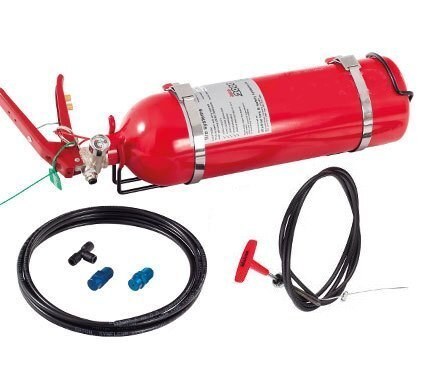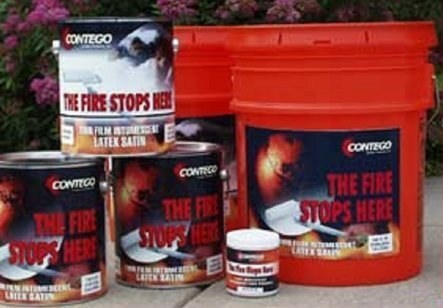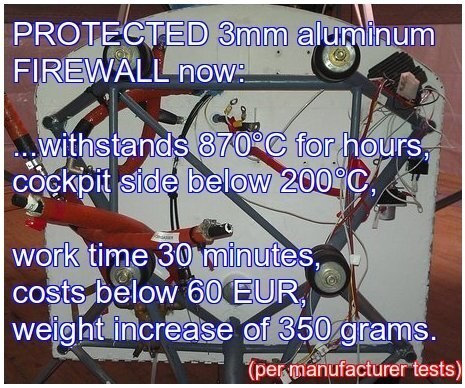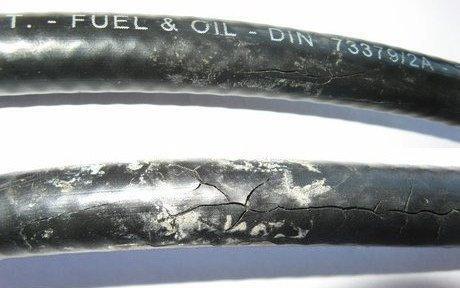Fire safety
Having worked for more than 10 years in emergency medicine, we know from firsthand experience what fires can do to people. Combined with a passion for preparing people for the unknown and relevant survival training, we want to merge these fields to provide you with some substantial life support systems that are usable and affordable:
Most general aviation and ultralight pilots have a great deal of respect for aircraft fires. Both checklists, procedure training and a fire extinguisher are there to “prevent the worst” from happening. Some even don’t wear synthetic clothing while flying. While general statistics show that aircraft fires are seldom, some deadly accidents in the last couple of years have awaken especially experimental and non-certified-aircraft pilots. And there are more dangers to come with trends towards composite materials, fuel injected engines, electric aircraft and Lifepo-batteries.

Many will be surprised that even commercial airliners have burn through limitations of 3-4 minutes, and these have advanced detection as well as passive and active fire suppression systems in place (Boeing, 2011).
Your well cared for light sport (LSA) or ultralight aircraft on the other hand has a thin aluminum, glass fiber or even wood firewall to stand between you and a raging fire forward firewall.
THE SOLUTION
- Use of good building and maintenance practice in regards to, but not limited to fuel hoses, hose connection, routing, correctly mounted firesleeve, no pressured fuel back into the cockpit (e.g. fuel pressure gauges)
- Firewall upgrade
- A cheap but functional fire detection system
- Fire suppression system firewall-forward
- Personal protection in form of appropriate garment and underwear that is durable and light.
Implementation of these solutions can be seen in some of the pictures above.
Take contact for a price inquiry!
WEIGHT and TIME
Dependent on integration, the total weight increase for the named suggestions are as little as 2.5 kg total, can be mounted either close to, forward or aft of the center of gravity, dependent on space and weight & balance considerations. Total time consumption, if done in line with other maintenance is about 3 hours.


SOME CONSIDERATIONS
- Training, mindset and workload: “Aviate, navigate, communicate” while problem solving a fire and effectively extinguishing it?
- Is there a real chance for this, what are the odds and can my emergency checklist effectively deal with the problem?
- Fire extinguishers: They are not even required by law in all countries onboard LSA / UL aircraft, so why bother?
- Halon (as used in aircraft grade extinguishers) is difficult to acquire, must be sent as hazardous shipment and is expensive to service (every other year). There are few service centers outside the US.
- Most foam extinguishers freeze at 0* Celsius.
- Common powder extinguishers hinder your vision, are a health hazard (close cockpit) and will certainly damage your aircraft (accidental discharge).
- Due to weight limitations you have to use small bottles with very limited effect.
- No access to the engine during an in-flight-fire.
- Will a partly incapacitated pilot be able to operate the extinguishers for a post crash deployment?
- Clothing: Nylon burns and melts, cotton burns, only Nomex fibers char, but still don’t prevent heat transfer. Additional isolation is necessary. See how race car drivers have to be clothed? In addition they even have the luxury of being able to stop their vehicle and get out...
- Protection of most vital organs?
- How about smoke and heat inhalation?
- Weight of fire suppression gear: cost benefit?
- What should it be able to handle: Inflight engine fire, instrument electrical fire, post crash fire?
Disclaimer: We have checked our solutions in real life test scenarios. It would not be feasible to certify these products for general aviation though. The cost by far outperforms the size of the market. Still we use aircraft certified components, industrial or car race components (which have strict requirements and rules). It is the freedom of the experimental or light sport aircraft builder to build and implement at his or her discretion (obviously with some limitations). As such we offer our kits and components.
Back


All comments are moderated before being published. Your email will not be visible